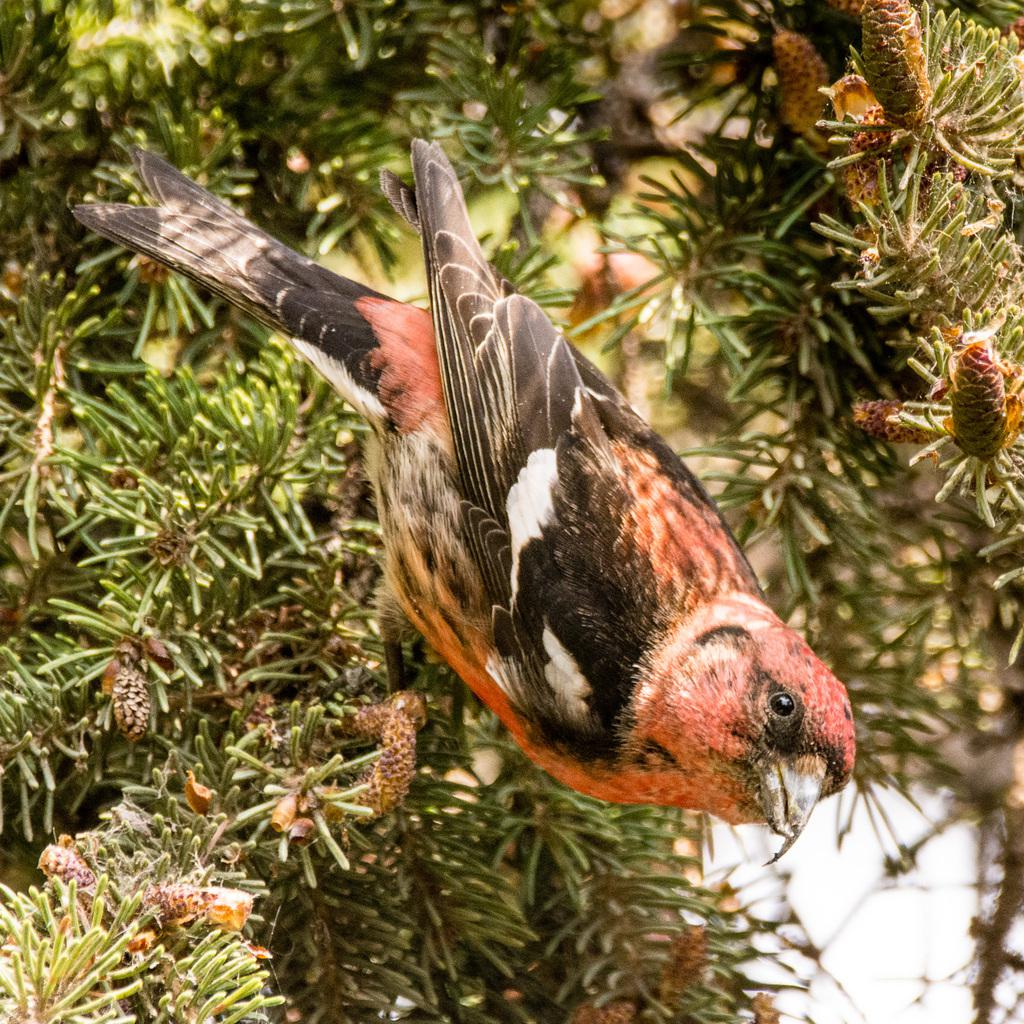White-winged Crossbills have a thick curved bill with crossed tips that they use to extract seeds from evergreen cones. They are a small (5-6.5 in) plump bird that can be found year-round in in the boreal forests of Canada and Alaska and in the northern United States in winter. The birds move in flocks, travelling large distances in search of food.
Male White-winged Crossbills have a pinkish-red body with black wings and tail and two large white wingbars. The females have yellowish-green bodies with dark brown wings and tail and two large white wingbars. As long as there is a good supply of conifer seeds, Crossbills can breed at any time of year as their young are fed regurgitated conifer seeds.
Could it be? Red Crossbills do not have white wingbars, and the males are darker red. Pine Siskins resemble juvenile Crossbill but have a straight, thinner bill and yellow in their wings. Pine Grosbeaks are larger with a stubbier bill and longer tail.
Did you know? Individual White-winged Crossbills can eat up to 3,000 conifer seeds each day.
See Also: Red Crossbill






